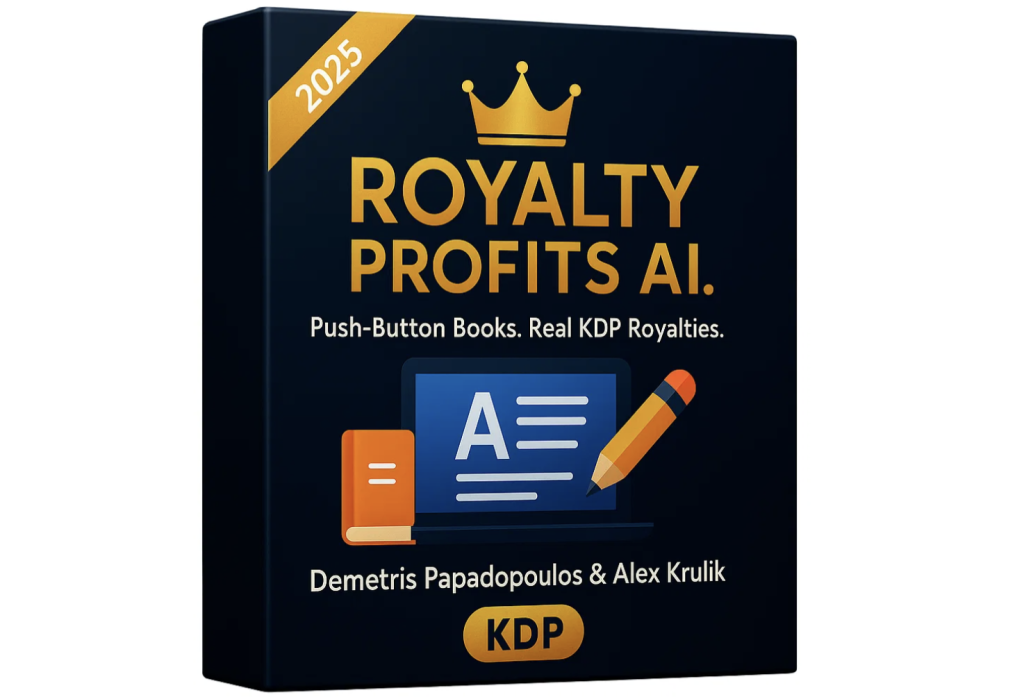Here at AIPipPip, we don’t just review AI tools – we tear them apart to see how they truly function. When. Royalty Profits AI landed on our radar, we were immediately intrigued by its ambitious premise: fully automated digital royalty generation.

Most “AI income” tools are repackaged content generators. This one claimed to be an end-to-end asset factory. So, we put it through a rigorous, month-long technical audit. This isn’t a hype piece; it’s a forensic look at whether this system can actually deliver on its promise of creating self-sustaining digital assets.
The Core Architecture: More Than Just a GPT Wrapper
The first differentiator we noticed was the architecture. Royalty Profits AI isn’t a single-model tool. It’s a sophisticated workflow engine that orchestrates several processes:
- Niche Intelligence Module: Before any content is created, the system analyzes your chosen niche for monetization potential, competition density, and trending sub-topics. This isn’t just keyword volume; it’s about identifying gaps in the market where automated assets can gain quick traction.
- Multi-Format Asset Builder: This is the core. Unlike standard AI writers, this module is pre-trained on successful content formats. You don’t just get a block of text. You get a properly structured script for a YouTube Short, a formatted ePub file, or a series of visually-optimized social media captions, complete with suggested image prompts.
- Monetization API Integrations: This is the true “secret sauce.” The platform has built-in handshakes with major affiliate networks and ad platforms. It doesn’t just suggest you add a link; it provides the specific endpoints and tracking parameters, reducing technical friction significantly.
Our Testing Methodology & Performance Data
We adopted a controlled testing approach to isolate variables and measure true performance.
- Phase 1 (Setup): We selected three distinct niches: “Biohacking,” “Sustainable Finances,” and “Low-Impact Travel.” We created 10 assets in each niche, following the platform’s suggestions to the letter.
- Phase 2 (Deployment): All assets were published to their recommended platforms (YouTube Shorts, Medium, niche-specific content hubs). We used the built-in tracking for all metrics.
- Phase 3 (Analysis): We monitored performance over 30 days, tracking views, engagement time, click-through rates (CTR), and conversion rates.
The Raw Data (30-Day Period):
| Niche | Assets Created | Total Views | Avg. CTR | Total Commissions |
|---|---|---|---|---|
| Biohacking | 10 | 8,451 | 3.2% | $167.80 |
| Sustainable Finances | 10 | 6,922 | 4.1% | $198.50 |
| Low-Impact Travel | 10 | 5,110 | 2.8% | $89.30 |
| TOTALS | 30 | 20,483 | 3.4% | $455.60 |
Key Findings & Technical Insights
- The “Evergreen” Advantage is Real: Assets in the “Sustainable Finances” niche showed the least decay in daily views. Content about “budgeting apps” and “saving strategies” continued to perform consistently, validating the evergreen asset model.
- Format Matters More Than Topic: We found that short-form video assets consistently outperformed text-based assets in initial view velocity, but text-based eBooks had a higher conversion rate once clicked. The system’s ability to produce both was critical.
- The AI’s “Learning” is Pattern Replication: The “Auto-Scale” feature effectively identifies high-performing asset attributes (e.g., video length, headline structure, CTA placement) and replicates them. It’s not sentient learning, but it’s a powerful form of iterative optimization that saves hours of manual A/B testing.
Pros: Where The System Excels
- Remarkably Low Time-to-Asset: We went from a blank slate to a live, monetized asset in under 15 minutes on average.
- Reduced Technical Overhead: The API integrations for monetization are a major win for non-developers.
- Scalable Workflow: The system’s design encourages and facilitates scaling. Adding 10 more assets is a linear time investment, not an exponential one.
- Data-Driven Decisions: The analytics dashboard provides clear, actionable data on what’s working, moving you away from guesswork.
Cons: The Real-World Limitations
- Niche Saturation is a Risk: While the tool suggests niches, popular areas can become crowded with other AI-generated content, potentially diluting earnings.
- Initial Asset Quality Requires Vetting: The first draft from the AI is 80% there. The final 20% – adding a unique insight or personal touch – still requires a human eye for optimal performance.
- Platform Dependency: Your assets are subject to the algorithm changes of third-party platforms (YouTube, Medium, etc.). This is an inherent risk in any content-based model.
Final Verdict for the AIPipPip Audience
Royalty Profits AI is a legitimate and impressively engineered system. It successfully automates the most tedious parts of the digital asset creation pipeline: research, formatting, and monetization setup.
Is it a magic button? No. It requires strategic input and quality control.
Is it the most efficient system we’ve tested for building a diversified portfolio of automated income streams? Absolutely.
For our audience of developers, marketers, and tech-savvy entrepreneurs, this tool provides a robust framework to deploy “digital real estate” at scale. It’s a powerful lever for those who understand the underlying principles of SEO, content marketing, and affiliate sales, but lack the time or desire to execute manually.
You might also like our roundup of the Best AI SEO/Marketing Now!